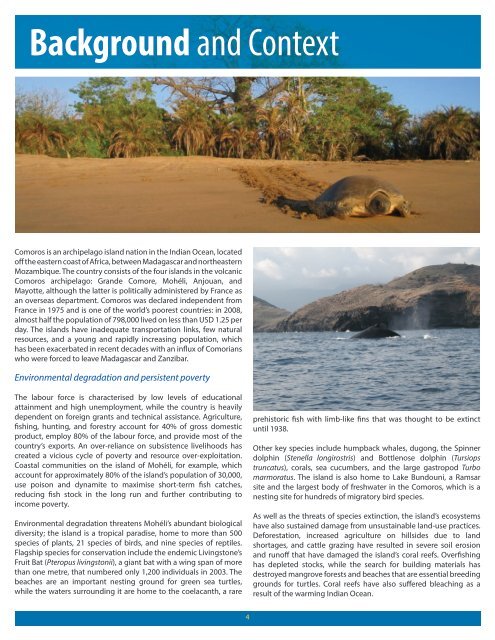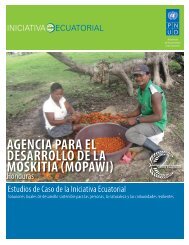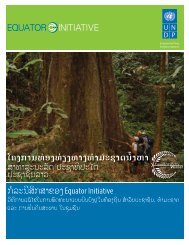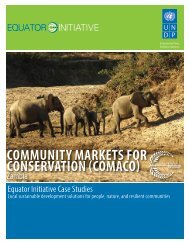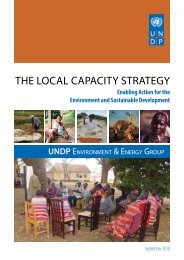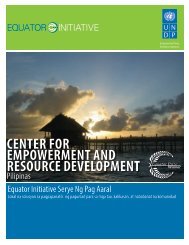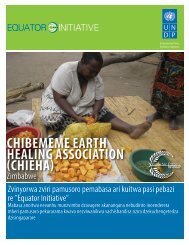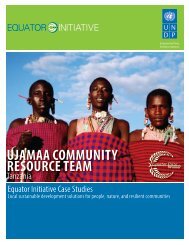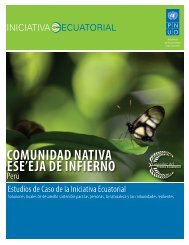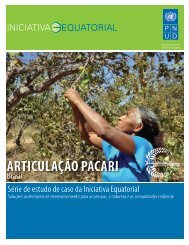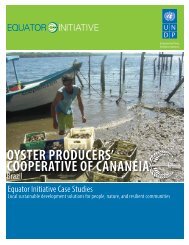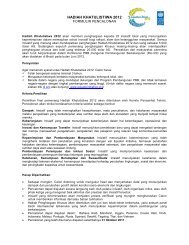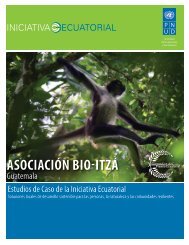MOHÉLI MARINE PARK - Equator Initiative
MOHÉLI MARINE PARK - Equator Initiative
MOHÉLI MARINE PARK - Equator Initiative
Create successful ePaper yourself
Turn your PDF publications into a flip-book with our unique Google optimized e-Paper software.
Background and ContextComoros is an archipelago island nation in the Indian Ocean, locatedoff the eastern coast of Africa, between Madagascar and northeasternMozambique. The country consists of the four islands in the volcanicComoros archipelago: Grande Comore, Mohéli, Anjouan, andMayotte, although the latter is politically administered by France asan overseas department. Comoros was declared independent fromFrance in 1975 and is one of the world’s poorest countries: in 2008,almost half the population of 798,000 lived on less than USD 1.25 perday. The islands have inadequate transportation links, few naturalresources, and a young and rapidly increasing population, whichhas been exacerbated in recent decades with an influx of Comorianswho were forced to leave Madagascar and Zanzibar.Environmental degradation and persistent povertyThe labour force is characterised by low levels of educationalattainment and high unemployment, while the country is heavilydependent on foreign grants and technical assistance. Agriculture,fishing, hunting, and forestry account for 40% of gross domesticproduct, employ 80% of the labour force, and provide most of thecountry’s exports. An over-reliance on subsistence livelihoods hascreated a vicious cycle of poverty and resource over-exploitation.Coastal communities on the island of Mohéli, for example, whichaccount for approximately 80% of the island’s population of 30,000,use poison and dynamite to maximise short-term fish catches,reducing fish stock in the long run and further contributing toincome poverty.Environmental degradation threatens Mohéli’s abundant biologicaldiversity; the island is a tropical paradise, home to more than 500species of plants, 21 species of birds, and nine species of reptiles.Flagship species for conservation include the endemic Livingstone’sFruit Bat (Pteropus livingstonii), a giant bat with a wing span of morethan one metre, that numbered only 1,200 individuals in 2003. Thebeaches are an important nesting ground for green sea turtles,while the waters surrounding it are home to the coelacanth, a rareprehistoric fish with limb-like fins that was thought to be extinctuntil 1938.Other key species include humpback whales, dugong, the Spinnerdolphin (Stenella longirostris) and Bottlenose dolphin (Tursiopstruncatus), corals, sea cucumbers, and the large gastropod Turbomarmoratus. The island is also home to Lake Bundouni, a Ramsarsite and the largest body of freshwater in the Comoros, which is anesting site for hundreds of migratory bird species.As well as the threats of species extinction, the island’s ecosystemshave also sustained damage from unsustainable land-use practices.Deforestation, increased agriculture on hillsides due to landshortages, and cattle grazing have resulted in severe soil erosionand runoff that have damaged the island’s coral reefs. Overfishinghas depleted stocks, while the search for building materials hasdestroyed mangrove forests and beaches that are essential breedinggrounds for turtles. Coral reefs have also suffered bleaching as aresult of the warming Indian Ocean.4


